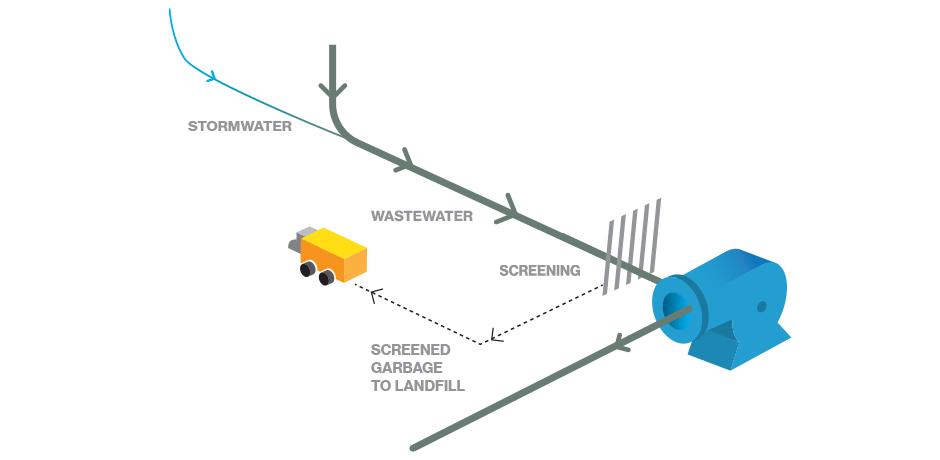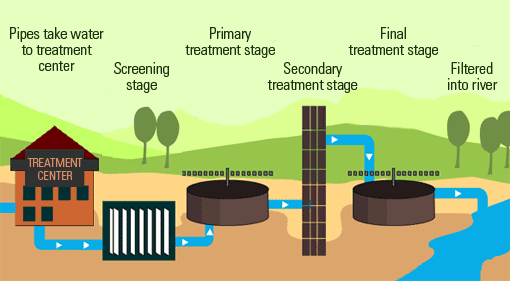Comprehensive Overview to Industrial Waste Water Treatment Processes
Comprehensive Overview to Industrial Waste Water Treatment Processes
Blog Article
Strategic Approaches to Improve Waste Water Therapy Effectiveness and Reduce Environmental Influence
In the realm of waste water therapy, the pursuit for boosted effectiveness and decreased ecological effect is a perpetual obstacle that demands strategic remedies. The combination of advanced treatment technologies, energy-efficient procedures, resource recuperation techniques, boosted nutrient removal techniques, and wise monitoring and control systems stands for a multifaceted structure for dealing with these pushing issues.
Advanced Therapy Technologies
Innovative membrane layer purification systems have actually changed innovative wastewater therapy procedures, significantly enhancing the removal of contaminants. This technology has proven to be highly efficient in removing a wide range of contaminants, consisting of drugs, hefty steels, and natural substances, which are usually testing to remove via typical therapy approaches.
In addition, membrane layer filtration systems provide various advantages over conventional treatment strategies. They call for much less space, create higher-quality effluent, and are much more resistant to variations in influent water top quality. Furthermore, these systems are extremely flexible and can be quickly integrated right into existing therapy plants or used as standalone systems for decentralized applications. As the need for tidy water remains to increase, the adoption of advanced membrane filtration technologies is important to make certain effective and sustainable wastewater therapy techniques.
Energy-Efficient Processes
The integration of energy-efficient procedures in wastewater therapy systems is vital for optimizing source usage and reducing functional expenses. By executing energy-efficient technologies, therapy plants can substantially decrease their carbon footprint and overall environmental influence. One essential strategy to enhancing energy performance in wastewater treatment is the use of advanced aeration systems, such as great bubble diffusers or surface area aerators, which can improve oxygen transfer effectiveness and lower energy usage. In addition, integrating power recovery systems, like anaerobic food digestion for biogas production or making use of excess warm for thermal processes, can aid balance out power requirements and promote sustainability.
Moreover, enhancing process control and automation with using innovative sensing units and monitoring systems can boost total power performance by readjusting procedures in real-time based on actual demand and problems. Applying power audits and frequently keeping an eye on energy performance indicators are essential techniques to recognize locations for enhancement and track energy-saving initiatives effectively. Overall, the fostering of energy-efficient procedures in wastewater therapy not only benefits the setting yet likewise adds to lasting price financial savings and operational sustainability.
Resource Recuperation Methods
With an emphasis on optimizing resource application and sustainability in wastewater treatment systems, the implementation of source recuperation strategies arises as a pivotal facet in improving operational efficiency. Resource recovery strategies in wastewater therapy include the recognition and removal of important resources from the waste stream, therefore turning what was as soon as taken into consideration waste into a useful asset. By implementing resource healing techniques such as nutrient elimination and healing, power generation from organic matter, and the production of multiple-use water, wastewater treatment plants can decrease ecological effect while next making best use of effectiveness.

Enhanced Nutrient Removal Techniques
Implementing advanced nutrient elimination methods is vital for enhancing the efficiency of wastewater therapy systems. Improved nutrient removal plays a crucial duty in lessening the environmental impact of cured effluent discharged right into water bodies. One of the key strategies utilized for enhanced nutrient elimination is the process of organic nutrient removal (BNR), which entails the removal of nitrogen and phosphorus via organic processes. This can be attained with the use of specialized microbes that can transform nitrogen compounds right into inert nitrogen gas through denitrification, and accumulate phosphorus within their cells via a procedure called boosted biological phosphorus elimination (EBPR)

In addition to BNR, progressed treatment techniques such as membrane layer bioreactors (MBRs) and constructed wetlands can likewise be why not check here used to enhance nutrient elimination performance. MBRs utilize membranes to attain premium effluent criteria by effectively removing nutrients and suspended solids. Created marshes simulate natural marsh processes to get rid of nutrients with plant uptake, microbial task, and sedimentation. By integrating these advanced nutrient elimination strategies right into wastewater treatment systems, municipalities and sectors can properly lower nutrient pollution and protect the environment.
Smart Monitoring and Control Systems
Utilizing innovative technology, the integration of wise monitoring and control systems changes the operational effectiveness of wastewater therapy facilities. These systems incorporate sophisticated sensors and information analytics to continuously keep track of crucial criteria such as pH degrees, turbidity, dissolved oxygen, and flow prices in real-time. By gathering and analyzing this data, operators can gain important insights into the performance of the therapy processes, allowing proactive changes to optimize treatment effectiveness.
Smart tracking and control systems likewise support remote monitoring capacities, enabling drivers to accessibility real-time information and control features from off-site locations. This remote accessibility boosts operational flexibility and responsiveness, enabling swift treatments in instance of system breakdowns or variations in influent top quality. The predictive maintenance capacities of these systems aid prevent devices failures and reduce downtime, ultimately enhancing the overall reliability of wastewater therapy procedures.
Conclusion
To conclude, tactical approaches such as sophisticated treatment modern technologies, energy-efficient procedures, source healing approaches, improved nutrient elimination strategies, and clever monitoring and control systems play an essential role in improving wastewater treatment effectiveness and minimizing ecological influence. By applying these techniques, wastewater treatment plants can boost their overall efficiency, reduce power intake, recover beneficial sources, and make certain compliance with environmental regulations. These approaches are necessary for lasting and reliable wastewater administration techniques.

In verdict, calculated techniques such as innovative treatment technologies, energy-efficient processes, resource recuperation techniques, improved nutrient removal strategies, and clever tracking and control systems play a vital duty in improving wastewater treatment efficiency and reducing environmental influence.
Report this page